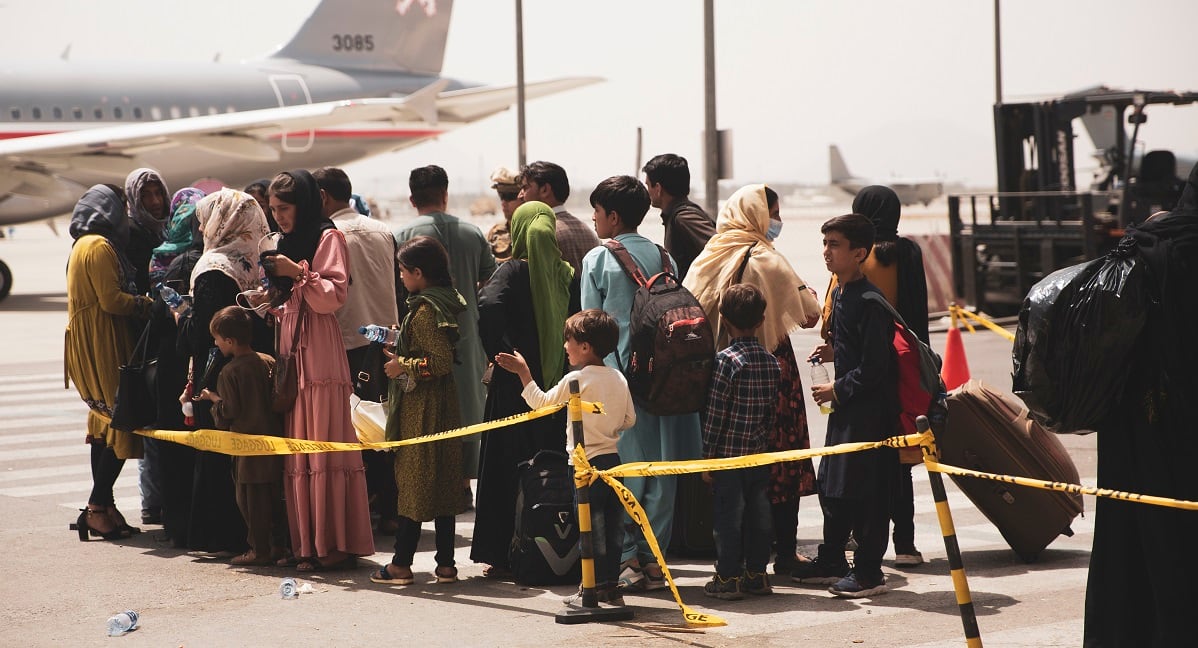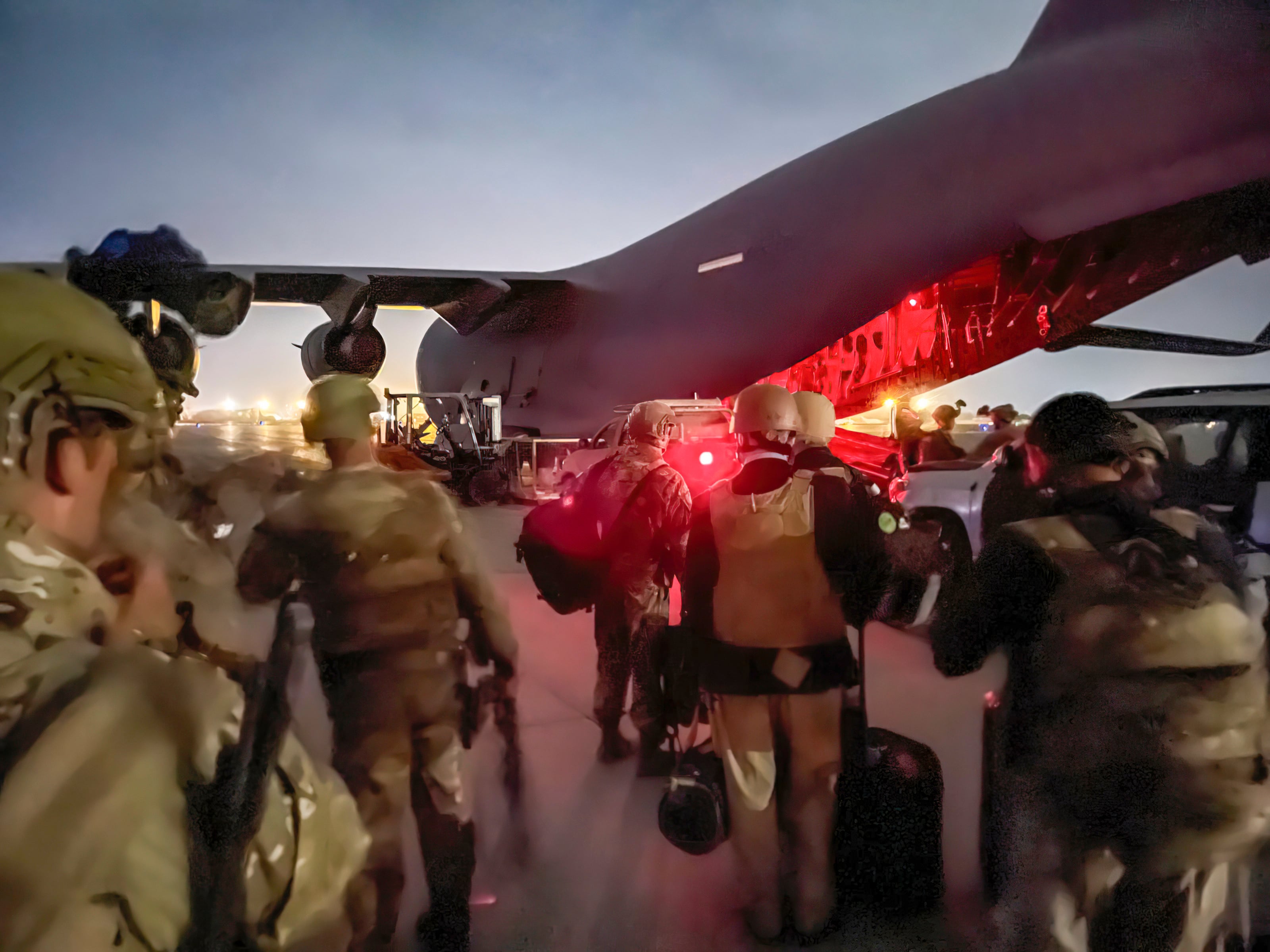Senior military leaders took to Capitol Hill for the second day in a row on Wednesday, to answer questions from lawmakers about what has, by turns, been referred to both as a catastrophe and an unprecedented success in the final days of U.S. presence in Afghanistan.
While leaders reiterated and lawmakers concurred that the non-combatant evacuation from Hamid Karzai International Airport in Kabul, the largest ever undertaken with more than 124,000 civilians rescued, was a logistical success, the overall withdrawal left much to be desired.
Prepared to field the questions, Defense Secretary Lloyd Austin included a prebuttal in his prepared remarks.
“So let me take each in turn,” he began, then listing off criticisms: That the U.S. shouldn’t have closed Bagram Air Base before the ultimate exit and that the civilian evacuation process should have begun sooner.
Elsewhere, lawmakers questioned whether troops should have extended their time in Kabul in order to evacuate more American citizens and Afghan allies, and what Afghanistan would look like today if President Joe Biden had taken their advice to keep 2,500 troops in the country. This is how senior leaders handled the discussion.
Bagram
After the fall of Kabul on Aug. 15, a chorus of critics questioned why the U.S. had closed its most strategically important base in Afghanistan.
The decision to close it was made following an order to bring troop levels down to 650, Marine Gen. Frank McKenzie, U.S. Central Command’s chief, said. That number was intended to be enough to guard the U.S. embassy in Kabul, and that troop level wouldn’t have been enough to defend Bagram.
“Well, in order to hold Bagram, we might have needed to probably push in 5,000 more troops on the ground,” he said. “So that would have been a significant decision to hold Bagram, and we were under the direction to go to zero. So it would’ve required a basic policy directive to change the plan. If you’re going to go to zero, and you’re going to keep enough forces to hold your embassy in the airfield, it is incompatible to hold any other base anywhere in the country.”
And while the U.S. could have surged troops to hold Bagram, strategically, it wouldn’t have done much to ease the withdrawal. Bagram is 40 miles outside of Kabul, on a single highway, neither a feasible evacuation point nor useful to provide protection to an evacuation in Kabul.
“Let me just further add that I did not see any tactical utility to Bagram,” McKenzie.
Evacuations
Critics of the drawdown have raised questions as to why the State Department did not start facilitating evacuations of Americans and Afghan allies in the spring, while the Defense Department was making plans to remove troops and possibly undertake a non-combatant evacuation, if necessary.
“On the issue of why we didn’t bring out civilians and [Special Immigrant Visa holders] sooner,” Austin said. “Again, the call on how to do that and when to do it is, really, a State Department call.”
At the core, administration officials were heeding then-Afghan President Ashraf Ghani’s warning that a mass evacuation would lead to a widespread loss of confidence in his administration, possibly accelerating the Taliban takeover.
“But again, we provided our input, and we certainly would have liked to have seen it go faster or sooner ―but, but again, they had a number of things to think through as well,” Austin said.
RELATED

Extending the deadline
When the U.S. launched a non-combatant evacuation on Aug. 16, the day after the Taliban walked into Kabul, the clock started on two weeks to get as many people out as possible.
Despite optimism from Biden that every American would get out, the State Department has since conceded that roughly 100 American citizens and permanent residents are still in Kabul.
So what were the risks of staying longer?
“And as for the mission’s end, my judgment remains, that extending beyond the end of August would have greatly imperiled our people in our mission,” Austin told the Senate Armed Services Committee on Tuesday. “The Taliban made clear that their cooperation would end on the first of September. And as you know, [we] faced grave and growing threats from ISIS-K. Staying longer than we did would have made it even more dangerous for our people, and would not have significantly changed the number of evacuees we could get out.”
The situation on the ground in Afghanistan depended heavily on the Taliban’s holding off any attacks against the U.S., as it had been since early 2020. But senior leaders have said they were not confident that the U.S. could negotiate an extension to that ceasefire, and that it might have been open season on the evacuation effort after Aug. 31.
Keeping 2,500
Over the course of the two hearings, much was made of both Milley’s and McKenzie’s recommendations to Biden in early 2021 that the U.S. maintain its force of 2,500 train-advise-assist troops on the ground in Afghanistan.
Tuesday marked the first time they admitted publicly that the president had disregarded their advice, but further discussions during both hearings fleshed out what the plan would have looked like.
Though it was his advice, Milley conceded that those 2,500 would have been at “great risk.”
“I have no doubt that the Taliban would have reinitiated combat operations or attacks on U.S. forces, and 2,500 would have been an increased risk,” he said. “What’s the value of keeping the 2,500? It has as much to do with the morale, and the keeping advisors with them, and having the morale of the Afghan security forces, and demonstrating confidence in the government.”
And while he shared Milley’s recommendation to keep 2,500 in the country, McKenzie conceded that such a level would only be sustainable if the Taliban continued to hold off, and that blowing the Aug. 31 would risk a resurgence of fighting. Likely, a U.S. troop surge would have been required, effectively undoing even a conditional drawdown.
While the Doha agreement, negotiated by the Trump administration, had seven benchmarks for the Taliban ― including renouncing ties with al-Qaida ― the only one they followed through with was the ceasefire.
Through much of 2020, both Milley and then-Defense Secretary Mark Esper urged that the U.S. should not withdraw unless the Taliban met all of the conditions, though Trump set a May 1 deadline and Biden extended that to Sept. 11, then rolled it back to Aug. 31.
The understanding was that the Taliban only held fire because they trusted the U.S. would leave.
“If you’re talking about a situation where you’re not fighting the Taliban, and you have the full assistance of the Afghan government ― or the Taliban’s attacks against you at a minimum ― yes, you can hold it at 2,500,” McKenzie said. “If, however you posit that you’re in Afghanistan, say, beyond August 31 without the tacit agreement of the Taliban, and without the assistance of the government of Afghanistan, who provided most of the physical security environment, then you’d have to put a big footprint.”
Meghann Myers is the Pentagon bureau chief at Military Times. She covers operations, policy, personnel, leadership and other issues affecting service members.





